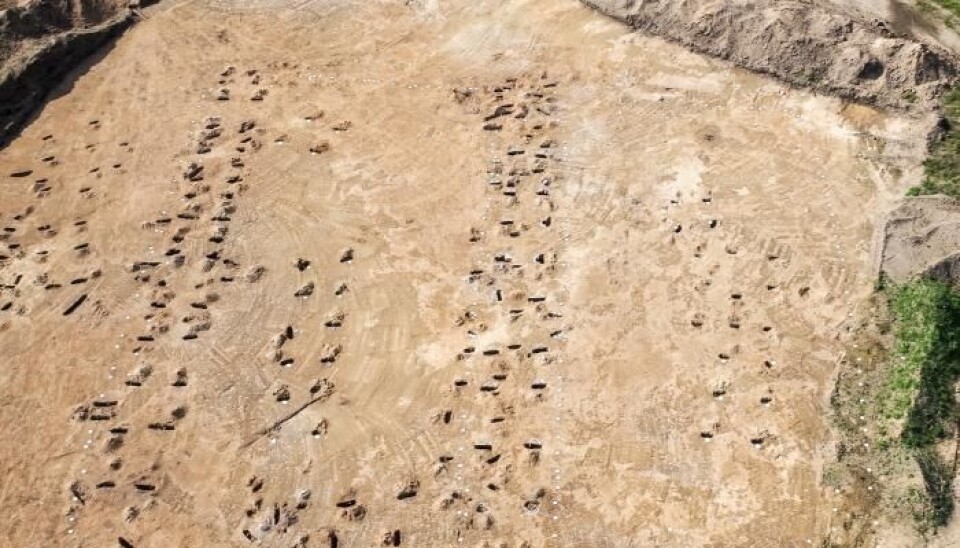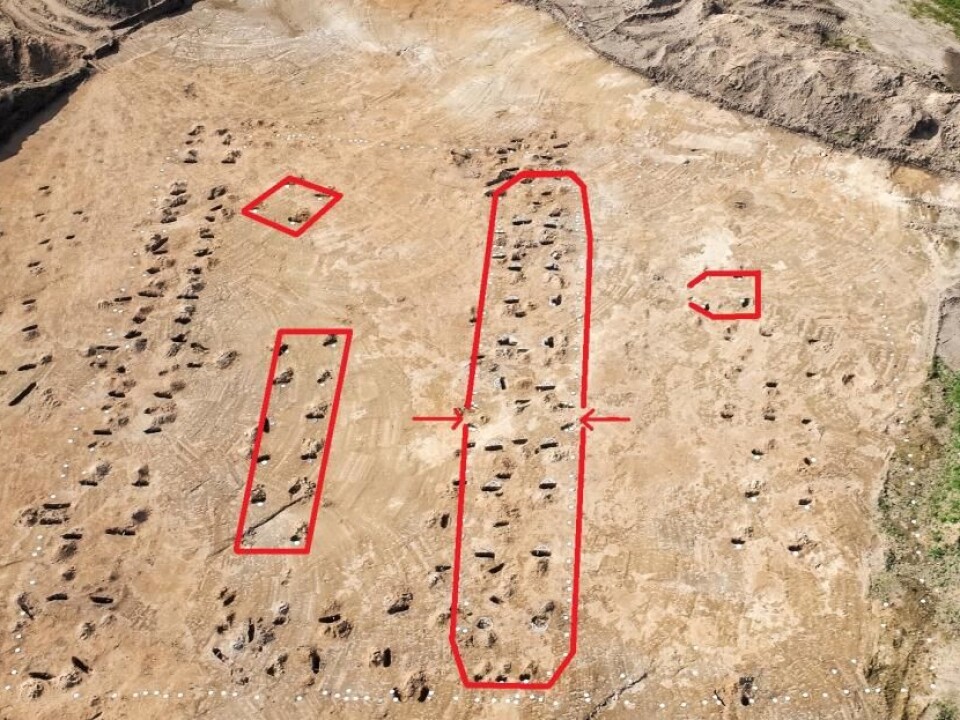
Archaeologists excavate 400 Iron Age houses in Denmark
A spectacular and unique site, say archaeologists.
The town of Jelling in Denmark is a unique archaeological treasure trove, with sites such as Jelling Church, the Jelling runic Stone, and two large burial mounds. Now, archaeologists have excavated an entire Iron Age (early Medieval) village.
“We have had the opportunity to excavate almost 400 houses over six hectares. I think it’s truly special to find a village where one house is replaced by a new one several times and especially the fact that we have excavated the houses in one large coherent area” says Katrine Balsgaard Juul, archaeologist and museum curator at The Vejle Museums (VejleMuseerne) in Southern Denmark.
The village covers an area equal to nine football pitches and was constructed in multiple periods of the Iron Age. All of the houses are dated to between 300 and 600 CE and Juul estimates that the area consisted of between eight and ten farms.
Archaeologist Stine Vestergaard Laursen, who is not involved in the excavation, describes the site as “spectacular.”

“Finding these types of settlements is not unheard of, but it’s unique to find them on this scale,” says Laursen, museum curator at Moesgaard Museum, Denmark.
Read More: Archaeologists discover a Viking toolbox
Pre-dates Harold Bluetooth
The houses are primarily wooden and measure, on average, 33 metres long by 5.5 metres wide. Juul suspects that all the residents were farmers who worked the land. Objects discovered on site suggest that some were skilled in iron and pottery production, which were typical of the period.
Archaeologists are now studying the houses closely in the hopes of discovering more about this relatively unknown period in Jelling's history, before it became a centre of power under King Harold Bluetooth in the 10th century.
“This village could bring us closer to understanding why Harold Bluetooth chose to settle here in Jelling,” says Juul.
Read More: Burnt cheese casts light on 3,000 year-old family drama
Casts light on Scandinavian Iron Age culture
The site could also reveal more about the structure and development of Iron Age society in Denmark.
“At other Iron Age villages such as Vorbasse and Nørre Snede, we see that Iron Age people moved within the same area. At the Jelling village we expect to see the same pattern. This will tell us something about the dynamic structure within such a village,” she says.
Laursen also expects the site to reveal some Iron Age secrets.
“Obtaining more information from these types of sites, provides improved and more precise knowledge of Iron Age village structure at a regional scale. Thus it puts us in a better position to understand how Iron Age culture was organised from a larger perspective,” says Laursen.
Archaeologists behind the excavation hope to be able to reconstruct one of the farm units from the village so that people can experience the site for themselves.
---------------
Read more in the Danish article on Videnskab.dk
Translated by: Catherine Jex





